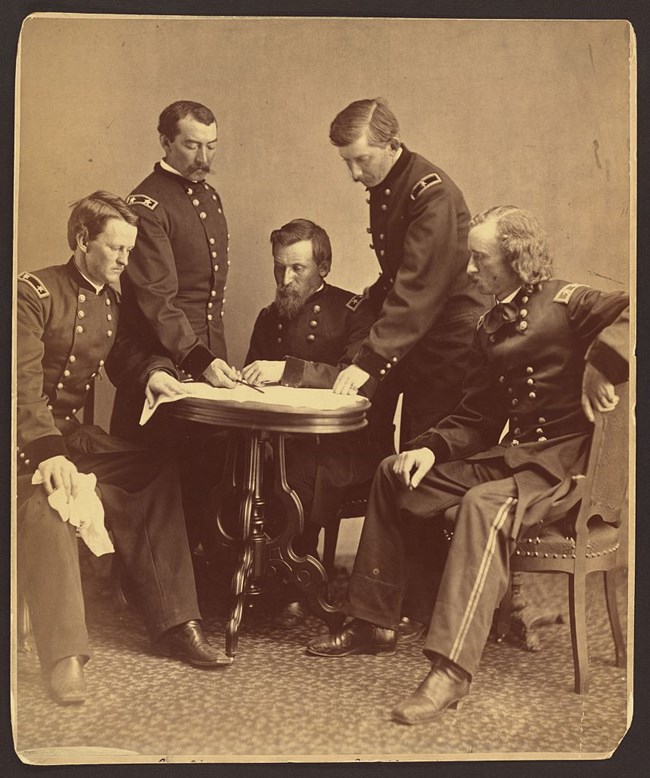Last updated: April 7, 2025
Article
Custer’s first “last stand” at Trevilian Station

Library of Congress
Recipient: Virginia Department of Conservation and Recreation
Amount: $325,615.00
Acres: 98.7
In June of 1864, Union General Ulysses S. Grant charged Major General Philip Sheridan with damaging the Virginia Central Railroad. With two divisions of cavalry, several artillery batteries, and nearly 9,000 men, Sheridan advanced to fulfill those orders as quickly as possible and maintain the element of surprise. But Confederate scouts became aware of Sheridan’s movements and warned Major General Wade Hampton, enabling his forces to arrive at Trevilian Station at roughly the same time as Sheridan. At dawn on June 11, both sides attacked. After nearly two days of fighting through thick woods and sustaining heavy casualties, the Confederates abandoned their assaults and Union forces withdrew.
During the first day of what became known as the Battle of Trevilian Station, Brigadier General George A. Custer’s Michigan Cavalry took a less traveled country lane toward Gordonsville Road, an important thoroughfare leading toward the rail station and Louisa County Court House. When the column turned right onto the road, Custer spotted a massive Confederate wagon train ahead of him, and he ordered Union forces to charge. However, a quick response by the Confederates encircled the northern troops, which stood alone until Union cavalry cut its way through to Custer’s “Wolverines” later in the afternoon, saving Custer’s brigade from total annihilation.
The property preserved with the assistance of this Battlefield Land Acquisition Grant witnessed this significant action during the Battle of Trevilian Station on June 11, 1864, and is referred to by some historians as the location of “Custer’s First Last Stand.” In his report to his superiors, Custer wrote, “The smallness of my force compelled me to adopt very contracted lines. From the nature of the ground and the character of the attacks that were made upon me our lines resembled very nearly a circle,” suggesting a striking similarity to the events of June 25, 1876, at the Battle of Little Bighorn.
Battlefield Land Acquisition Grants from the NPS American Battlefield Protection Program empower preservation partners nationwide to acquire and preserve threatened Revolutionary War, War of 1812 and Civil War battlefields. In addition, the program administers three other grant opportunities: Preservation Planning Grants, which are open to all sites of armed conflict on American soil, and the newly authorized Battlefield Restoration and Battlefield Interpretation Grants. This financial assistance generates community-driven stewardship of historic resources at the state, tribal and local levels.
